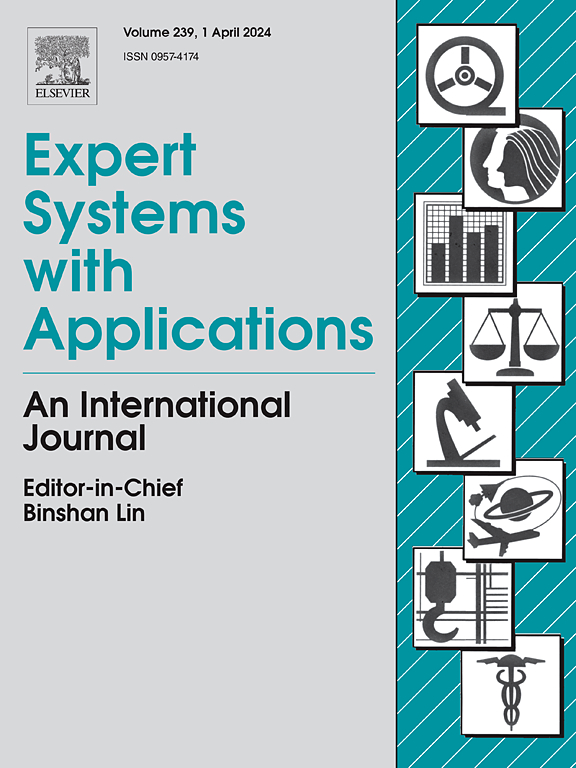SV-2DGS:基于2DGS模型的稀疏视图三维重建优化
IF 7.5
1区 计算机科学
Q1 COMPUTER SCIENCE, ARTIFICIAL INTELLIGENCE
引用次数: 0
摘要
在三维重建领域,从稀疏视点捕获的场景图像中恢复结构一直是一个具有挑战性的任务。目前流行的3DGS模型在处理稀疏视点数据时经常遇到渲染场景模糊和高斯椭球不一致的问题,导致误差增加。为了解决这些问题,本研究提出了SV-2DGS模型,一种基于2DGS的稀疏视图三维重建优化方法。该模型主要对Colmap中的点云匹配和2DGS重建过程进行优化。为了从模糊的视图中捕捉细节,SV-2DGS在Colmap中引入了一个数据增强框架,采用特征提取和上采样技术来生成高分辨率的三维点云和相机姿势。此外,为了增强重建的一致性,SV-2DGS采用高斯圆盘重建技术,通过构造高斯圆盘的接近图,重点对接近值较高的圆盘进行重建,从而获得更平滑的重建结果。通过案例分析,本研究表明SV-2DGS模型的PSNR比预优化的2DGS模型提高了0.399 dB,在24视图和高清晰度场景下具有出色的重建精度和细节捕捉能力。此外,在自采数据集上进行的实验也证实了SV-2DGS模型适用于日常生活中非专业设备拍摄的低像素场景图像的重建。本文章由计算机程序翻译,如有差异,请以英文原文为准。
SV-2DGS: Optimization of sparse view 3D reconstruction based on 2DGS models
In the field of three-dimensional reconstruction, recovering structure from scene images captured from sparse viewpoints has always been a challenging task. The currently popular 3DGS model often encounters issues of blurry rendered scenes and inconsistencies in Gaussian ellipsoids when processing sparse viewpoint data, leading to increased errors. To address these, this study proposes the SV-2DGS model, an optimization method for three-dimensional reconstruction from sparse views based on 2DGS. This model primarily optimizes the point cloud matching in Colmap and the 2DGS reconstruction process. To capture details from blurry views, SV-2DGS introduces a data augmentation framework within Colmap, employing feature extraction and upsampling techniques to generate high-resolution three-dimensional point clouds and camera poses. Furthermore, to enhance the consistency of reconstruction, SV-2DGS employs Gaussian disc reconstruction techniques, which focus on reconstructing those discs with high proximity values by constructing a proximity graph of the Gaussian disk, thereby achieving a smoother reconstruction outcome. Through case analysis, this study demonstrates that SV-2DGS achieves a 0.399 dB improvement in PSNR compared to the pre-optimized 2DGS model, exhibiting outstanding reconstruction accuracy and detail capture in 24-view and high-clarity scenes. Additionally, experiments conducted on self-collected datasets confirm that the SV-2DGS model is suitable for reconstructing low-pixel scene images captured with non-professional equipment in everyday life.
求助全文
通过发布文献求助,成功后即可免费获取论文全文。
去求助
来源期刊

Expert Systems with Applications
工程技术-工程:电子与电气
CiteScore
13.80
自引率
10.60%
发文量
2045
审稿时长
8.7 months
期刊介绍:
Expert Systems With Applications is an international journal dedicated to the exchange of information on expert and intelligent systems used globally in industry, government, and universities. The journal emphasizes original papers covering the design, development, testing, implementation, and management of these systems, offering practical guidelines. It spans various sectors such as finance, engineering, marketing, law, project management, information management, medicine, and more. The journal also welcomes papers on multi-agent systems, knowledge management, neural networks, knowledge discovery, data mining, and other related areas, excluding applications to military/defense systems.
 求助内容:
求助内容: 应助结果提醒方式:
应助结果提醒方式:


